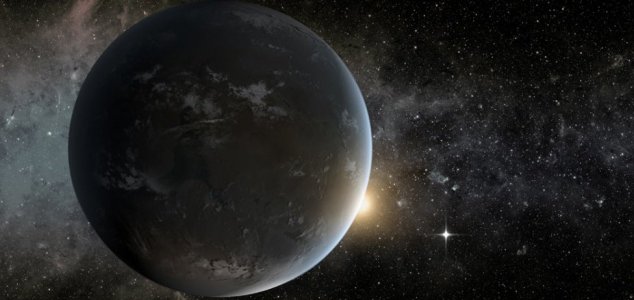Space & Astronomy
June 3, 2014 · 35 comments
35 comments

The planet is the largest rocky world ever found. Image Credit: NASA
Its sheer magnitude has baffled scientists as by our current understanding of planet formation it shouldn't be possible for a rocky terrestrial world of such a size to exist.
"A mega-Earth is a lot of solids concentrated in the same place without any gas," said astronomy professor Dimitar Sasselov. "That is a problem because our understanding for how planets form requires the solids to get together in an environment where almost 99 percent of the mass is hydrogen and helium."
Scientists believe that this latest discovery could improve the chances of finding alien life elsewhere in the universe as it suggests that rocky planets can form much sooner than previously thought.
Source: Russia Today | Comments (35)
Huge 'Godzilla of Earths' discovered
By T.K. RandallJune 3, 2014 ·
 35 comments
35 comments
The planet is the largest rocky world ever found. Image Credit: NASA
Astronomers have identified a planet in a distant solar system that is 17 times the mass of the Earth.
Found using the Kepler space observatory, this gargantuan rocky world has a diameter of 29,000km and orbits an old sun-like star known as Kepler-10 which is approximately 560 light years away.Its sheer magnitude has baffled scientists as by our current understanding of planet formation it shouldn't be possible for a rocky terrestrial world of such a size to exist.
Scientists believe that this latest discovery could improve the chances of finding alien life elsewhere in the universe as it suggests that rocky planets can form much sooner than previously thought.
Source: Russia Today | Comments (35)

The Unexplained Mysteries
Book of Weird News
AVAILABLE NOW
Take a walk on the weird side with this compilation of some of the weirdest stories ever to grace the pages of a newspaper.
Click here to learn more

Support us on Patreon
BONUS CONTENTFor less than the cost of a cup of coffee, you can gain access to a wide range of exclusive perks including our popular 'Lost Ghost Stories' series.
Click here to learn more
Philosophy and Psychology
Other World News
Extraterrestrial Life and The UFO Phenomenon
United States and the Americas
Total Posts: 7,606,144 Topics: 316,364 Members: 201,836
Not a member yet ? Click here to join - registration is free and only takes a moment!
Not a member yet ? Click here to join - registration is free and only takes a moment!



























Please Login or Register to post a comment.